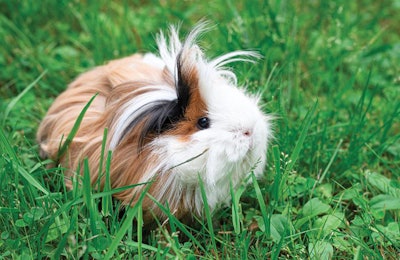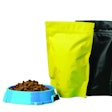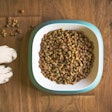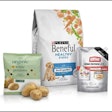
Small pets aren’t all that different from cats and dogs, as it turns out, at least where the packaging for their food is concerned.
“The trends that we see today and expect in the future for small pet food packaging reflect the changes that are occurring in the category itself,” said Bill Kuecker, vice president, marketing for Mondi Jackson Consumer Packaging. “As we see more premium producers seeking to differentiate themselves, more companies are turning to packaging as a means to make their products stand out.”
One of the key trends making waves in the dog and cat food packaging sector has also established itself in small pet food packaging: sustainability.
“Pet owners are interested in supporting pet food manufacturers that have demonstrated a commitment to social responsibility,” said Rebecca Casey, vice president of marketing and consumer market development at TC Transcontinental.
The challenges of sustainability in pet food packaging
“Replacing plastic with sustainable packaging is a huge priority for customers across nearly every segment, and pet food packaging is no exception,” said Nickie Parker, vice president of Commercial Excellence at WestRock. “A few challenges to consider with pet food packaging specifically include:
- Many pet food packages are made with multi-layer film laminates and multi-wall bags with film laminates that are not recyclable in the majority of communities throughout the U.S.
- While rigid plastic containers are technically recyclable, reports from the U.S. Environmental Protection Agency (EPA) indicate that an extremely low percentage of plastic from these containers are actually recycled into new products and end up in landfills instead.
- The majority of plastic-based pet food packaging is made from non-renewable resources, such as natural gas and oil.”
Sustainability demands in small pet food packaging
The sustainability challenges and demands seen in the dog and cat segments are echoed in the small pet segment, according to industry experts.
“There is increased interest for sustainable packaging in this category,” said Kuecker. “This coming year, we will likely see more offerings on the shelf that promote their own sustainable package characteristics for small pet food.”
Understanding that crossover, and having the ability to meet it on multiple fronts, should be a focus if a packaging company wants to succeed — particularly if said company dips its toes in multiple pet packaging segments.
“There is a common thread, no matter whether the food packaging is for small pets or the more common dog and cat packaging,” said Julie Conklin, senior product marketing manager for ProAmpac. “Today converters need the agility to respond quickly to each customer, whether it be larger sized bags of pet food for small animals or single-meal packages for bigger friends with fur, hard shells or scales. From our vantage point, this means being responsive on several fronts: multiple materials, an ability to address sustainability requirements and having large-run or small-quantity capabilities, as well as being able to support innovations.”
Knowing, internally, the benefits of sustainable packaging can also assist in helping customers meet their own challenges.
“As companies face mounting pressure around sustainability, especially to replace plastic in their packaging, we believe innovative, sustainable paper and packaging solutions will provide:
- increased recycling options,
- opportunities to meet consumers’ growing desire for use of renewable resources,
- a significant reduction in over-packaging through SiOC designs for e-commerce applications,
- excellent shelf presentation through branding opportunities that clearly show a regard for sustainability, and
- full transparency for consumers on both product and packaging through digital activation,” said Parker.
The future of small pet food packaging
The future outlook of small pet food packaging is expected to continue along the same lines of dog and cat food packaging. Beyond sustainability, e-commerce is of significant interest (see sidebar, “Succeeding in pet food marketing in the digital space”), as are several other trends everyone is used to discussing in the dog and cat packaging space.
“Another common trend is the continuing shift toward premium packaging, which reflects consumers welcoming pets as members of the family,” said Conklin. “[We also anticipate] more movement toward plastic flat-bottom pouches and the continued need to support innovation.”
According to Casey, other top trends, which will be recognizable to anyone in the dog and cat food space, are:
Consumer trends
- Convenience – easy to re-close packaging for multiple uses
- Transparency – consumers expect clarity and knowledge of where their pet food products are coming from
Market trends
- Fresh food offering expansion – refrigerated easy to re-close packaging
- Improved shelf life with alternative barriers – focus on packaging as protection
As always, flexibility and strategy will be key. And whether dogs and cats or guinea pigs and rabbits are the targets, packaging will continue to play an important role in the marketing and sales of pet food products for the foreseeable future.

















